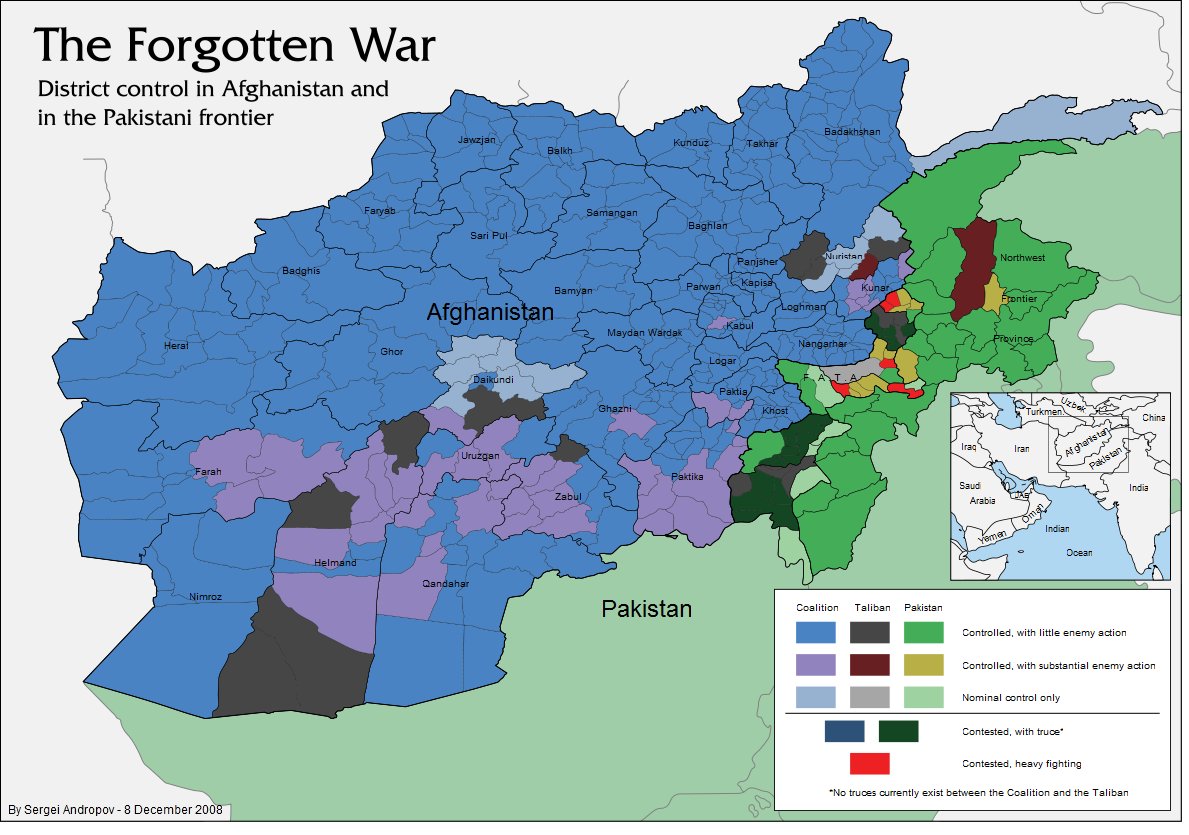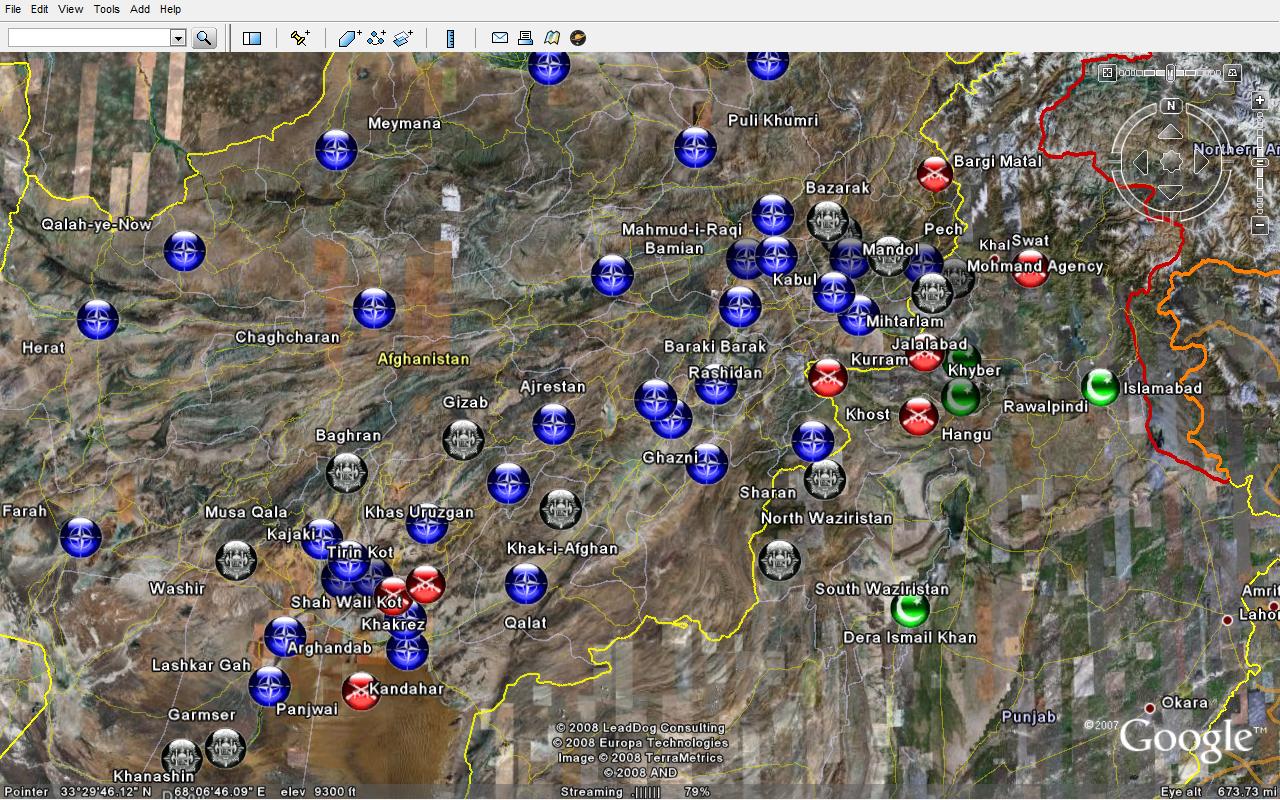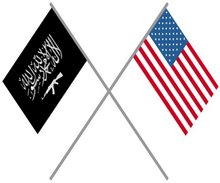
(Click for full size image.)
At long last, Tʜᴇ Mᴀᴘ is complete.
Due to the narrow width of Blogger's columns, I'm almost certainly going to have to migrate to WordPress.
"This enemy attacked not just our people, but all freedom-loving people everywhere in the world. The United States of America will use all our resources to conquer this enemy. We will rally the world. We will be patient, we will be focused, and we will be steadfast in our determination...." —President George W. Bush, September 11, 2001

In a second battle in Helmand province, Afghan and international troops retook the Nad Ali district centre - which had been held by fighters - during a three-day fight, Ahmadi said.
That battle, which also involved airstrikes, ended on Saturday and resulted in the death of 40 Taliban fighters, officials said.
Afghan police and soldiers were now in control of the district centre.
Nato said its aircraft bombed fighters after they were seen gathering for a major attack, killing "multiple enemy forces".
"If the fighters planned a spectacular attack prior to the winter, this was a spectacular failure," Richard Blanchette, an Isaf spokesman, said.
Taliban claim to have forced NATO-led troops from a remote district
THE NATO-led International Security Assistance Force (ISAF) has withdrawn from a district in the north-eastern province of Nuristan, the international force said.
ISAF said it retreated from its forward operating base in the Kamdish district on Friday following advice from Afghanistan’s Defence Ministry.
But the Taliban claimed that it forced ISAF troops in the district to retreat after engaging them in fierce fighting in the district, one of the country’s most insecure.
US wants to reduce dependence on government by arming militias
THE UNITED States plans to arm tribal militias against the Taliban, US Defence Secretary Robert Gates said at a NATO summit in Hungary.
As part of a plan to create greater co-operation on both sides of the Afghan-Pakistani border, the US wants to train tribal militias in an attempt to reduce its dependence on the central government in Kabul.
Parliament members had already suggested arming the tribes, but the idea was not given any currency at the time.
Around 135,000 residents have fled a Pakistani tribal area bordering Afghanistan to escape ongoing clashes between troops and pro-Taliban fighters, officials said.
Half of the population of some villages in the Bajaur tribal district had reportedly moved on Thursday.
There have also been reports that fighters were stopping people from leaving some areas.
"We have around 135,000 people who have left their homes there," said Habibullah Khan, the additional chief secretary for the Federally Administered Tribal Areas.
Rising death toll
"We have directed officials in adjoining districts to provide shelter, food and health care to the migrating families. We are setting up more camps to help these people just like refugees."
More than 460 suspected fighters and 22 army troops, have died since Pakistani forces started military operations in Bajaur a week ago, officials say.
Abdul Rehman Malik, the head of Pakistan's interior ministry, said intelligence sources claim that about 3,000 fighters remain in the northwestern region of Bajaur. He also said they included Pakistanis, Afghans and Central Asians.
Malik also vowed to "wipe out" the fighters.
Witnesses said that thousands of families had arrived in Shabqadar, a small town adjoining the tribal belt. Local residents and welfare groups were raising funds and cooking food for them, they said.
Local residents in the Mammoond area of Bajaur have said that pro-Taliban fighters had banned people from migrating, saying that if they left the area it would be a sign of defeat.
[More]
 Finally.
Finally.Clashes come days after official says Nuristan may fall into rebel hands
A GROUP of Pakistani Taliban have crossed over the Afghan border and attacked a remote district in the north-eastern province of Nuristan, the Interior Ministry said.
The fighting, which began on Saturday, came days after the head of the provincial council warned that the entire province could fall into Taliban hands unless the government sent troops to stave off the Taliban assault in the Baga Matal district.
Five militants were killed and seven injured in the heavy fighting between police and Pakistani Taliban, the ministry said.
Extra troops have been sent into the district after several days of clashes, which saw residents take up arms against the rebels.
One of Nuristan’s Members of Parliament said the recent clashes had called into question the government’s ability to make swift, decisive decisions.
In the neighbouring province of Kunar, rebels killed nine US soldiers in one of the bloodiest attacks suffered by American troops since the US-led invasion of 2001.
Via Quqnoos.The district in Ghazni which fell to Taliban recently is recaptured by Afghan government forces
Authorities in Ghazni province says that Ajristan district has been recaptured by Afghan forces.
The spokesman for Ghazni governor said that this district was taken on Wednesday during a joint Afghan and coalition operation and is once again under the control of the government.
According to the spokesman, 15 Taliban were killed and about 20 were wounded in the operation.
The Taliban captured Ajristan district 3 days ago. Ajristan is one of Ghazni’s remotest districts which neighbours Daykundi province.
Via Quqnoos.